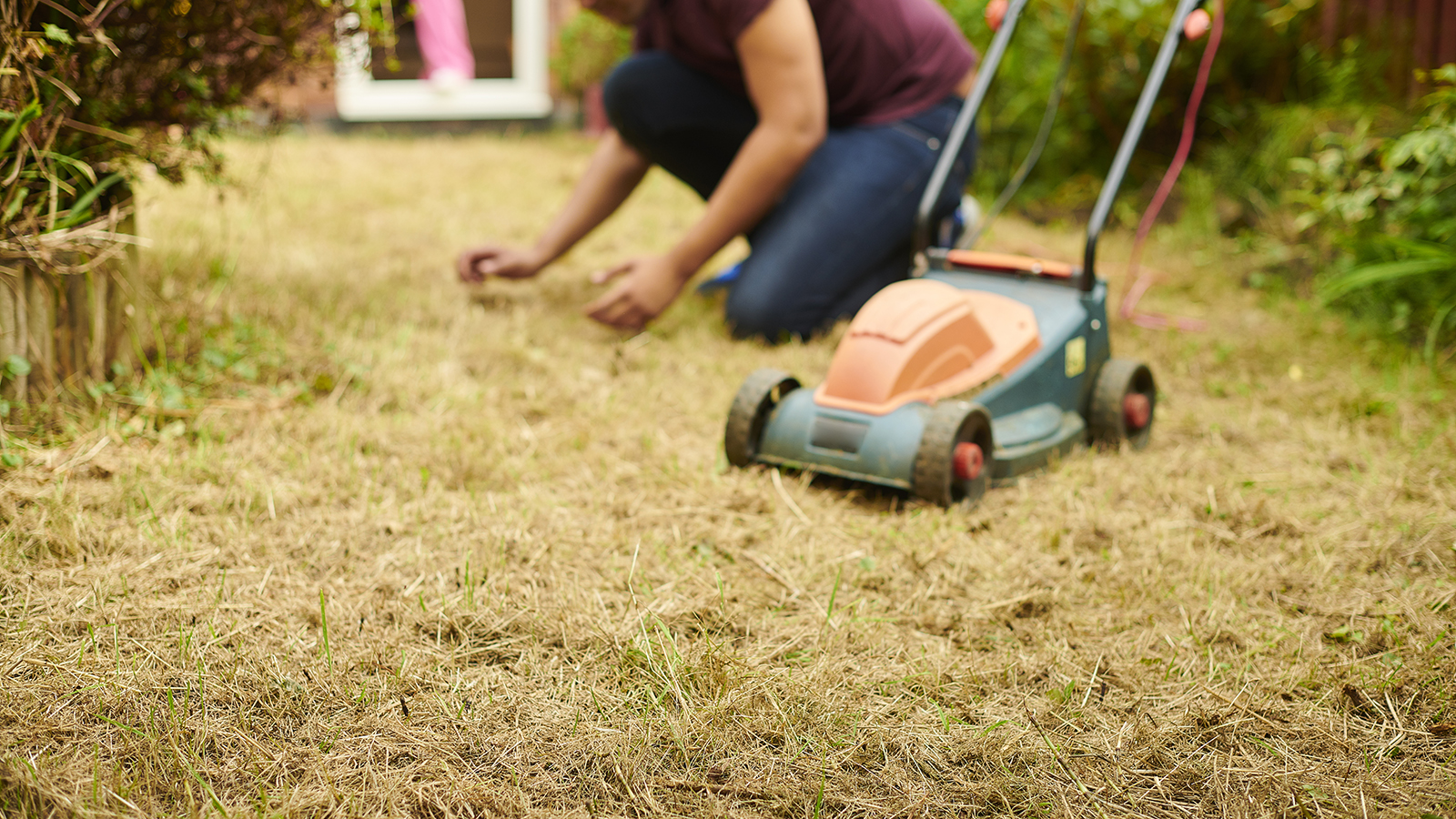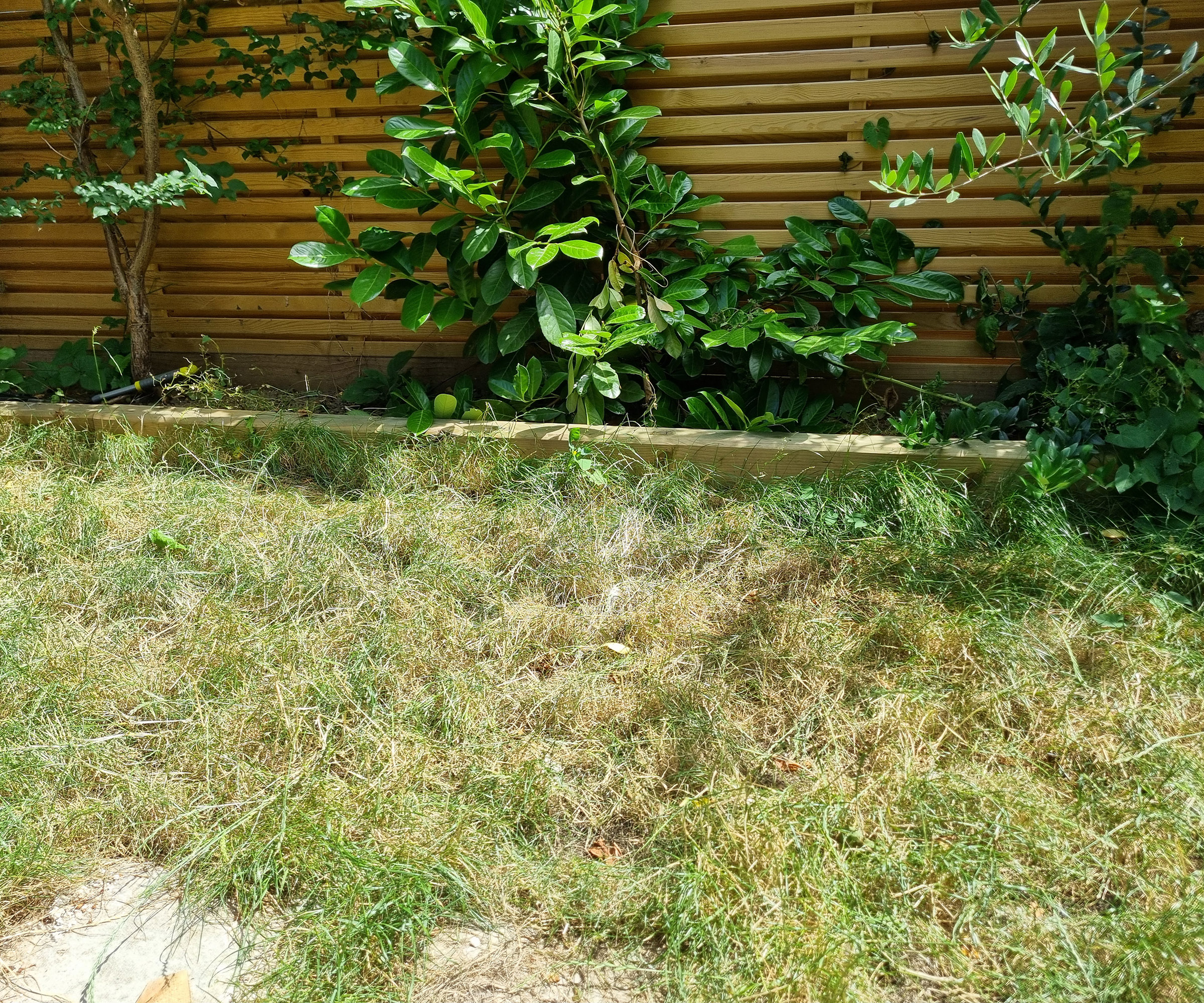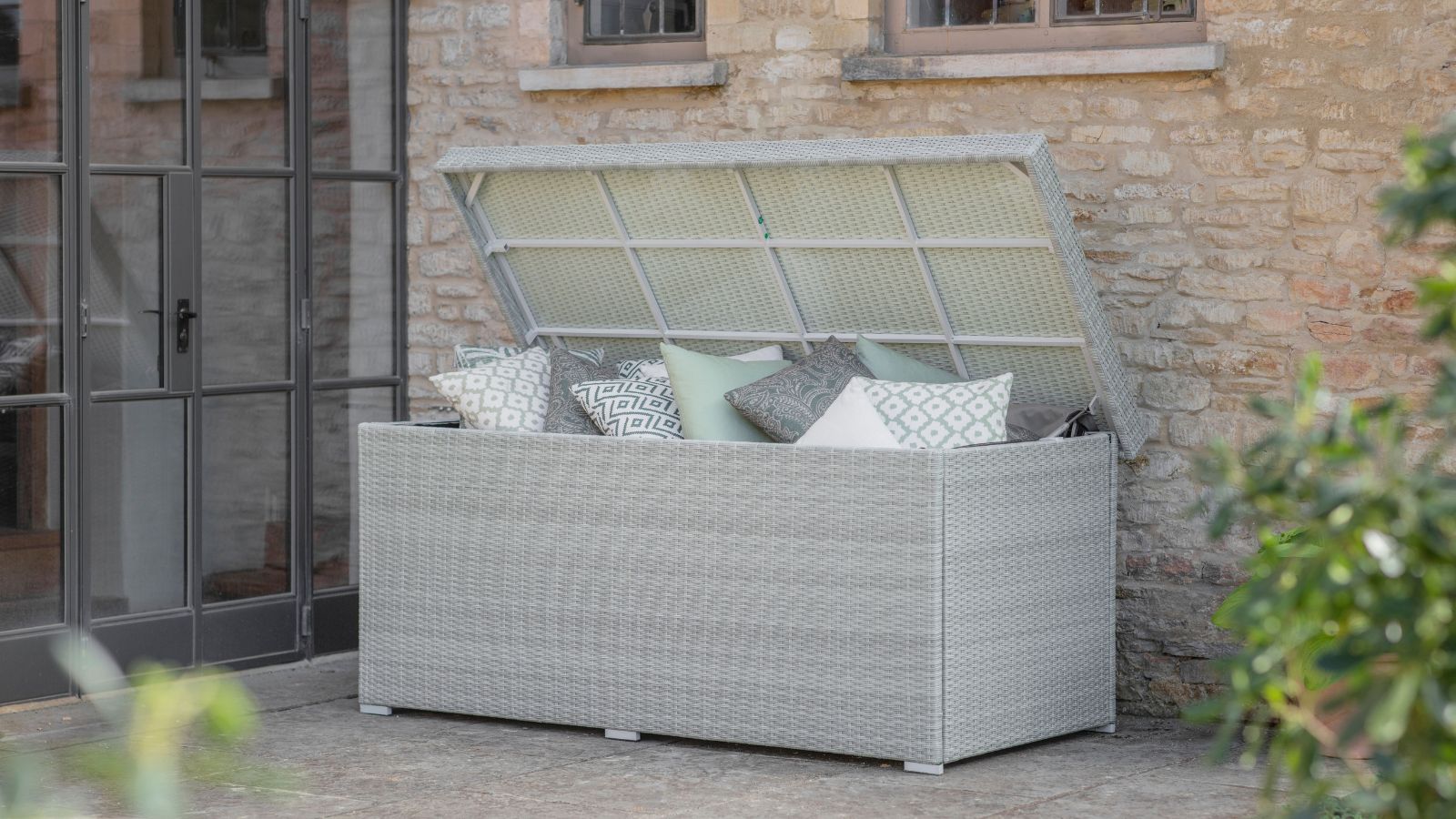Is your grass dead or can you bring it back to life? Expert lawn rescuers share their advice
Understanding whether your lawn is dormant or dead is key to the steps you take to transform your brown grass back to its green glory

Knowing whether your grass is dead, or simply playing at it, is key to whether or not it can be restored to full health. Brown, brittle grass may look sickly but the roots underneath the soil can still be ticking away, meaning that all is not lost.
The solution doesn't always lie in giving your lawn a soaking either. Browning and thinning grass can be a sign of compacted soil, which will restrict the flow of nutrients and water, and other summer lawn care mistakes.
Lawn care experts highlight, firstly to identify dead vs dormant grass, and secondly, how to fix those problem.
Dead or dormant?
In simple terms, dormant grass can be revived; dead grass cannot. But how to tell them apart?
Grass goes dormant to conserve energy when there aren't enough resources, i.e. during dry spells and heatwaves. This is where the grass blades turn brown until conditions improve.
"During this time of dormancy, do not mow your lawn as cutting dry, dormant grass can cause damage and stress the lawn further," says Julian Palphramand, Head of Plants at British Garden Centres.
"Dead grass on the other hand, will pull up extremely easily; this usually means that the roots are dead and not integrated with the soil. Whereas dormant grass normally offers some resistance," adds Andrew White, Gardening Expert at Rhino Greenhouses.
Bring your dream home to life with expert advice, how to guides and design inspiration. Sign up for our newsletter and get two free tickets to a Homebuilding & Renovating Show near you.
"Another distinction is that dead grass generally shows up in smaller patches where the roots have died off. Dormant grass can often take the form of more uniform, larger patches of grass," says Andrew.

How to revive dormant grass
"If your lawn is thinning, wilting, or turning brown, this is a sign that your soil is compacted and you need to aerate your grass. This simple process can rescue your lawn if it’s been suffering from compacted soil, as it improves drainage and the flow of nutrients, air, and water," says Jamie Shipley, a gardening expert and Managing Director of Hedges Direct.
"Spike your grass with a garden fork as deeply as possible, targeting particularly compact areas. To prevent weeds from growing in the temporary holes, you can use sand on lawns to fill them. However, you should avoid aerating during the peak of summer as this may cause damage to your lawn when it’s at its most vulnerable," adds Jamie.
Another cause of brown grass is when the soil dries out and there isn’t enough water, "Once the rain returns, lawns usually recover and turn green again," says Julian Palphramand.
When considering how long to spend watering your lawn back to health, Jamie advises drenching your lawn once a week, once the sun has set will keep your lawn moist. "Drenching once a week, soaking right through to the soil beneath, is far more beneficial than sporadic watering. It encourages grass to root more deeply, letting it access water more easily," Jamie explains.

How to fix dead patches
If your grass has failed the "tug test" then you need to consider how to replace the dead patches with new grass. Overseeding and filling in the gaps is essential for stopping weeds from taking over.
"It's best to carry this out when temperatures are warmer to make sure seed germination takes place. Temperatures should be above 13 degrees on average before you think about maintaining your lawn," says Jamie Shipley.
He recommends a lawn repair kit. Try Gro-Sure Smart Lawn Repair Patches at Amazon. "These kits are widely available and often contain slow-release lawn fertiliser as well as seed, making this an effective quick-fix option for gardeners, says Jamie.
"Generally, if you have tried to repatch your lawn and it hasn't worked, there's a good chance there's a more prominent issue than under/overwatering or a lack of nutrients. There's likely a soil issue or disease in the lawn that needs to be ripped up and started on again," says Andrew White, Gardening Expert at Rhino Greenhouses.
FAQs
How often should you water the garden to prevent brown patches?
"During Spring and throughout Summer, you should aim to water your lawn at least every 3-4 days, but in particularly hot spells, it's worth watering your lawn in the early morning or late evening. You should never water your lawn in the peak temperatures during the day, as this can kill your lawn off," says Andrew White, Gardening Expert at Rhino Greenhouses.
Can mowing too short lead to stressed or discoloured grass?
"Yes, absolutely! If you have a freshly laid lawn, you'll want to let it grow out initially and then cut it relatively short for a few cuts. After this, you'll want to cut your grass to roughly 20mm in the summer, as it will avoid stressing the lawn," says Andrew White.
Once your grass has come back to life then think about giving it an even fresher look by learning how to edge a lawn.

Julian Palphramand is Head of Plants at British Garden Centres. His expertise lies in horticulture with a passion for fostering a love of plants.

Jamie Shipley is currently a Managing Director at Hedges Direct Ltd - a position he has held since 2018 - and has a robust skill and extensive knowledge of the Horticulture and Landscaping industries.

Andrew White is Rhino Greenhouses Direct's resident gardening enthusiast with over 8 years' experience in gardening related topics.

Teresa was part of a team that launched Easy Gardens in 2018 and worked as the Editor on this magazine. She has extensive experience writing and editing content on gardens and landscaping on brands such as Homes & Gardens, Country Homes & Interiors and Living Etc magazine. She has developed close working relationships with top landscape architects and leading industry experts, and has been exposed to an array of rich content and expertise.
In 2020 Teresa bought her first home. She and her partner worked alongside architects and builders to transform the downstairs area of her two bedroom Victorian house in north London into a usable space for her family. Along the way she learned the stresses, woes and joys of home renovation, and is now looking to her next project, landscaping the back garden.
